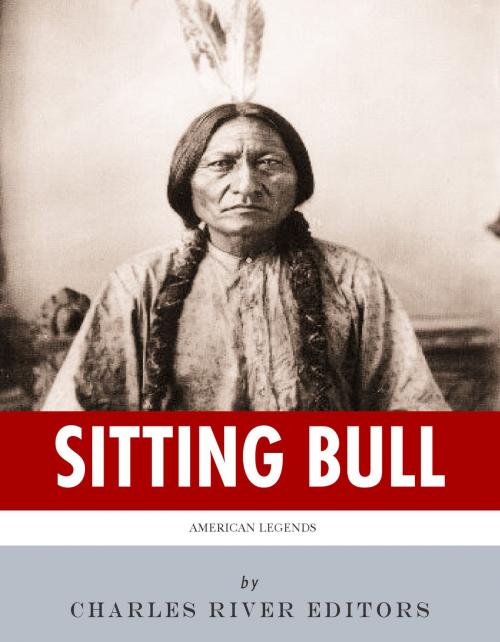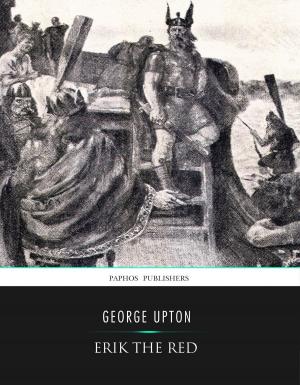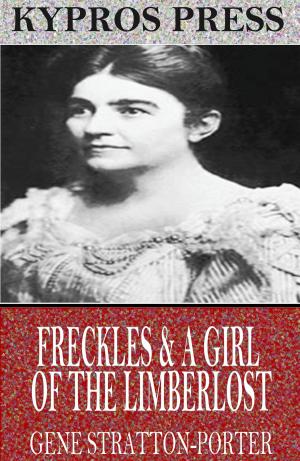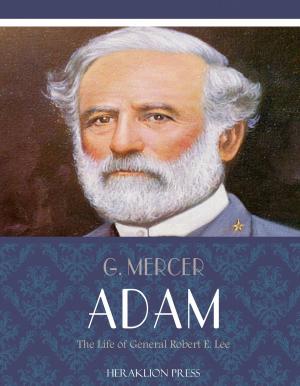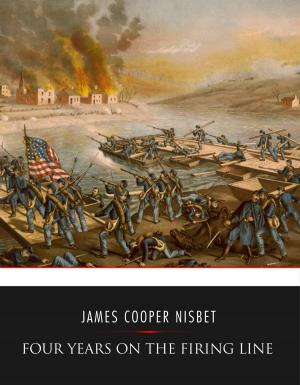American Legends: The Life of Sitting Bull
Nonfiction, History, Americas, Native American, Biography & Memoir| Author: | Charles River Editors | ISBN: | 9781475323979 |
| Publisher: | Charles River Editors | Publication: | June 7, 2013 |
| Imprint: | Language: | English |
| Author: | Charles River Editors |
| ISBN: | 9781475323979 |
| Publisher: | Charles River Editors |
| Publication: | June 7, 2013 |
| Imprint: | |
| Language: | English |
Includes pictures of Sitting Bull and important people and places in his life.Explains the Battle of the Little Bighorn and several Lakota oral legends.Includes a Table of Contents"When I was a boy the Sioux owned the world. The sun rose and set on their land; they sent ten thousand men to battle. Where are the warriors today? Who slew them? Where are our lands? Who owns them? Is it wrong for me to love my own? Is it wicked for me because my skin is red? Because I am Sioux? Because I was born where my father lived? Because I would die for my people and my country?" - Sitting BullA lot of ink has been spilled covering the lives of history's most influential figures, but how much of the forest is lost for the trees? In Charles River Editors' American Legends series, readers can get caught up to speed on the lives of America's most important men and women in the time it takes to finish a commute, while learning interesting facts long forgotten or never known. In 1872, during a fight along the Yellowstone River between U.S. troops protecting railroad workers and Sioux warriors, one of the Sioux did something both unusual and inspiring. At the height of the battle, with bullets whizzing all around him, this warrior sat down, loaded his cannupa (sacred pipe), and began to smoke, partaking in his people's religious sacrament. For the Sioux, smoking a pipe was akin to praying, and the smoke, wafting up through to the heavens, represented those prayers as they floated up to Wakan Tanka, the "god" of the Native Americans who occupied the North American Plains. Wakan Tanka is not the name of their god but rather a description, for the words literally mean "Great Mystery." The Sioux warrior continued smoking until done with his pipe, and after carefully reaming and cleaning out the pipe, he rose to his feet, and rejoined the battle. Of course, it was not that battle which made Sitting Bull one of the most famous Native Americans in American history. Like Geronimo in the Southwest during the same era, Sitting Bull was a warrior who fought in several skirmishes against settlers and U.S. forces across the Plains during the 1860s, and while it is still debated whether he was the "Supreme Chief of the whole Sioux Nation" by 1868, it's clear that he was one of the influential leaders of the Lakota. And when The Great Sioux War of 1876 began, Sitting Bull was recognized as the most important leader among all Native American tribes on the Plains, and the one to turn to for those who intended to keep fighting whites. Sitting Bull ensured he would become a legend at the Battle of the Little Bighorn, during which an estimated 2,000 Lakota and Cheyenne warriors inspired by one of his visions routed and then annihilated the 7th U.S. Cavalry led by George Custer. That disaster led the American government to double down on its efforts to "pacify" the Sioux, and by the end of the decade many of them had surrendered and been moved onto a reservation. Sitting Bull defiantly refused to surrender, instead heading with a smaller band into Canada and remaining exiled. When he finally surrendered to the U.S. in 1881, he was a celebrity of sorts, and Sitting Bull went on to appear in Buffalo Bill Cody's Wild West Show during the decade. Not surprisingly, his death was as controversial as his life; in 1890 Sitting Bull was killed on a reservation after plans to arrest him went terribly awry, leading to fighting in the aftermath that left over a dozen dead. American Legends: The Life of Sitting Bull chronicles the amazing life of the Sioux leader who defiantly fought to save his people's homeland, but it also humanizes the man who became one of the most famous Native Americans in American history. Along with pictures of important people, places, and events, you will learn about Sitting Bull like you never have before, in no time at all.
Includes pictures of Sitting Bull and important people and places in his life.Explains the Battle of the Little Bighorn and several Lakota oral legends.Includes a Table of Contents"When I was a boy the Sioux owned the world. The sun rose and set on their land; they sent ten thousand men to battle. Where are the warriors today? Who slew them? Where are our lands? Who owns them? Is it wrong for me to love my own? Is it wicked for me because my skin is red? Because I am Sioux? Because I was born where my father lived? Because I would die for my people and my country?" - Sitting BullA lot of ink has been spilled covering the lives of history's most influential figures, but how much of the forest is lost for the trees? In Charles River Editors' American Legends series, readers can get caught up to speed on the lives of America's most important men and women in the time it takes to finish a commute, while learning interesting facts long forgotten or never known. In 1872, during a fight along the Yellowstone River between U.S. troops protecting railroad workers and Sioux warriors, one of the Sioux did something both unusual and inspiring. At the height of the battle, with bullets whizzing all around him, this warrior sat down, loaded his cannupa (sacred pipe), and began to smoke, partaking in his people's religious sacrament. For the Sioux, smoking a pipe was akin to praying, and the smoke, wafting up through to the heavens, represented those prayers as they floated up to Wakan Tanka, the "god" of the Native Americans who occupied the North American Plains. Wakan Tanka is not the name of their god but rather a description, for the words literally mean "Great Mystery." The Sioux warrior continued smoking until done with his pipe, and after carefully reaming and cleaning out the pipe, he rose to his feet, and rejoined the battle. Of course, it was not that battle which made Sitting Bull one of the most famous Native Americans in American history. Like Geronimo in the Southwest during the same era, Sitting Bull was a warrior who fought in several skirmishes against settlers and U.S. forces across the Plains during the 1860s, and while it is still debated whether he was the "Supreme Chief of the whole Sioux Nation" by 1868, it's clear that he was one of the influential leaders of the Lakota. And when The Great Sioux War of 1876 began, Sitting Bull was recognized as the most important leader among all Native American tribes on the Plains, and the one to turn to for those who intended to keep fighting whites. Sitting Bull ensured he would become a legend at the Battle of the Little Bighorn, during which an estimated 2,000 Lakota and Cheyenne warriors inspired by one of his visions routed and then annihilated the 7th U.S. Cavalry led by George Custer. That disaster led the American government to double down on its efforts to "pacify" the Sioux, and by the end of the decade many of them had surrendered and been moved onto a reservation. Sitting Bull defiantly refused to surrender, instead heading with a smaller band into Canada and remaining exiled. When he finally surrendered to the U.S. in 1881, he was a celebrity of sorts, and Sitting Bull went on to appear in Buffalo Bill Cody's Wild West Show during the decade. Not surprisingly, his death was as controversial as his life; in 1890 Sitting Bull was killed on a reservation after plans to arrest him went terribly awry, leading to fighting in the aftermath that left over a dozen dead. American Legends: The Life of Sitting Bull chronicles the amazing life of the Sioux leader who defiantly fought to save his people's homeland, but it also humanizes the man who became one of the most famous Native Americans in American history. Along with pictures of important people, places, and events, you will learn about Sitting Bull like you never have before, in no time at all.
